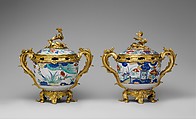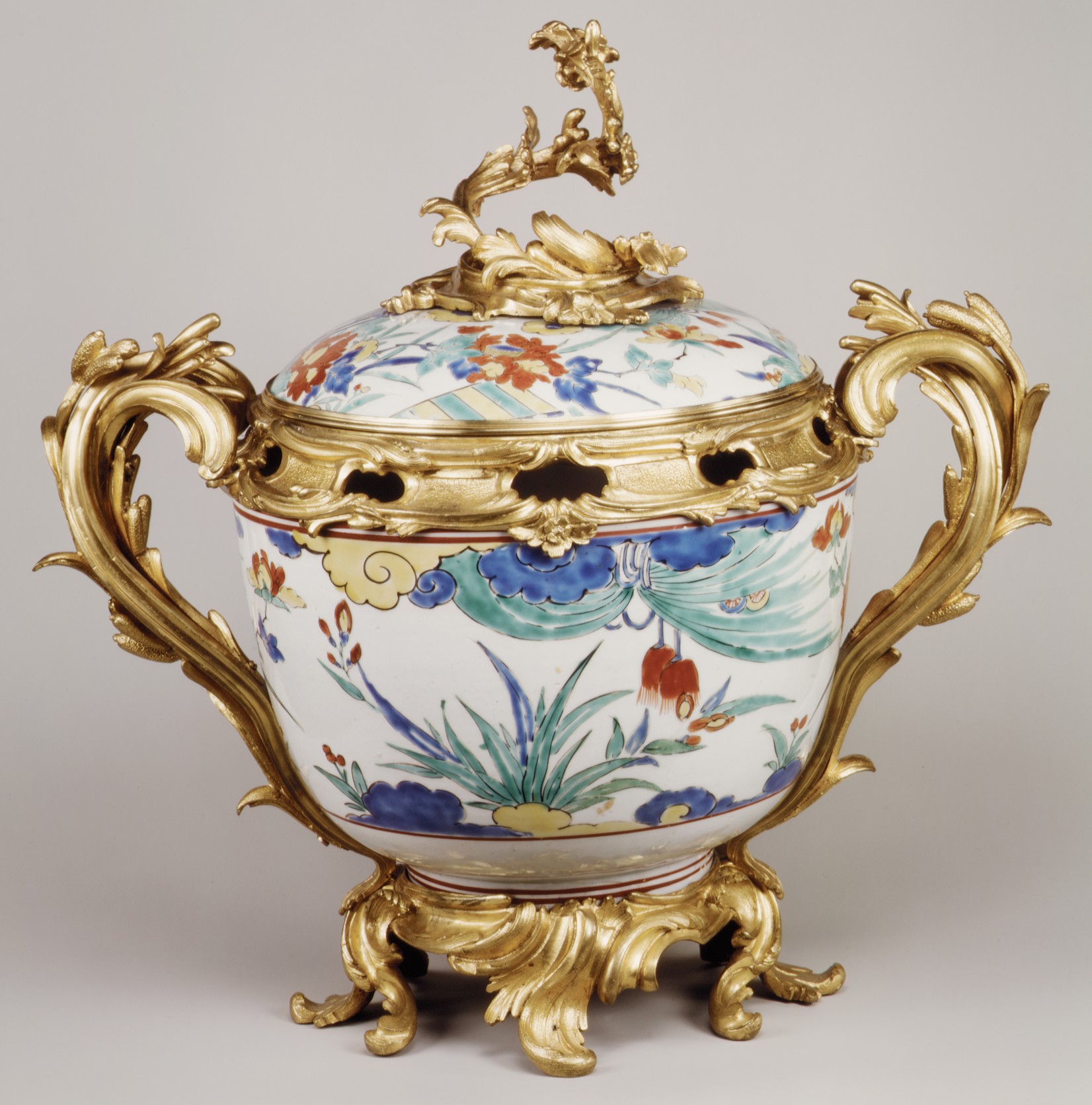Potpourri bowl with cover (one of a pair)
Japanese porcelains with French mounts from the mid-eighteenth century are less common than mounted Chinese porcelains of the same period. Porcelains from Japan were sometimes chosen for mounting in silver in the first part of the century, but it seems that within several decades Chinese porcelains embellished with gilt bronze became the preferred choice of European collectors. Not only are surviving examples of mounted Chinese porcelains more numerous than their Japanese counterparts but the former appear with greater frequency in eighteenthcentury auction catalogues and inventories.
These covered porcelain bowls were produced at Arita, in southwestern Japan, in the late seventeenth century. Their decoration displaying highly stylized vegetation and rock work is in the Kakiemon style, named after a family of potters working in Arita whose wares were commonly painted in a palette dominated by red, deep blue, turquoise, and yellow. The appearance of these bowls has been transformed by the addition of gilt bronze mounts in the full-blown Rococo style. The design of the mounts incorporates sinuous C-shaped scrolls, elongated acanthus leaves, and bulrushes, and the asymmetrical upward curve of the cover mount imparts the sense of movement that characterizes the best Rococo design. The cartouche-shaped openings in the gilt-bronze rim that separates the cover from the bowl suggest that these pieces were used as containers for petals, herbs, and spices to scent the air, but it is likely that they were intended primarily to be decorative. They would have been viewed as important works of art, and both their imposing size and the high cost of the Japanese porcelain and the mounts would have signaled the owner’s elevated financial status.
Due to rights restrictions, this image cannot be enlarged, viewed at full screen, or downloaded.
This artwork is meant to be viewed from right to left. Scroll left to view more.




